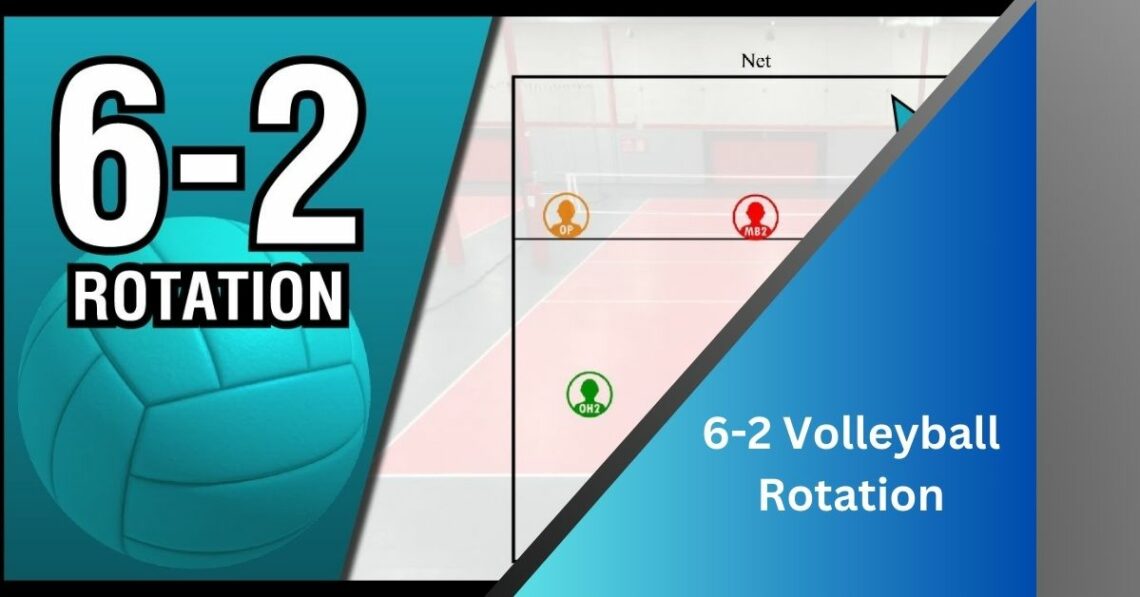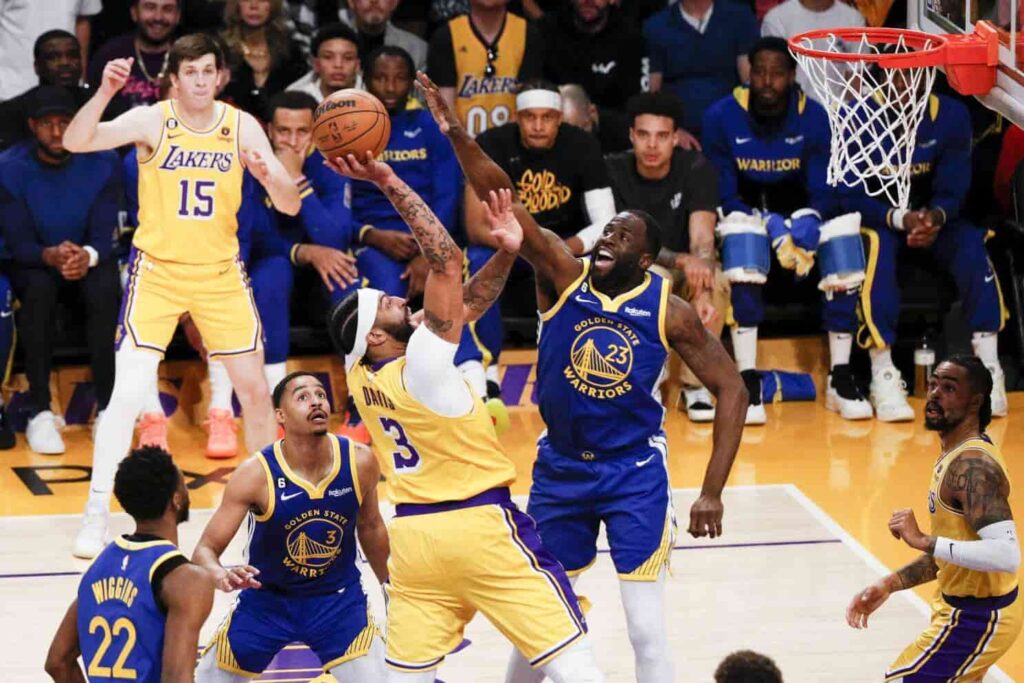
6-2 Volleyball Rotation – Solving The Magic!
Welcome to the dynamic world of the 6-2 volleyball rotation! Whether you’re a player, coach, or just curious about the game, we’re here to decode the strategy that’s shaking up the volleyball scene.
In a 6-2 volleyball rotation, six players are on the court, with two setters alternating between the front and back rows. This allows for a dynamic mix of two hitters and two middle blockers at any given time.
In this quick dive, we’ll explore the basics, advantages, and real-game impact of the 6-2 rotation. Get ready for a fast-paced journey into the heart of this game-changing tactic!
Table of Contents
ToggleThe Players’ Game 6-2 Roles – Let’s Find Out!
In a 6-2 rotation, the players take on the versatile roles of both setter and hitter, showcasing their adaptability and all-around skills on the volleyball court.

Imagine a team where every player is not confined to a single role but instead seamlessly transitions between orchestrating plays as a setter and delivering powerful hits as a hitter.
It’s akin to having a squad of all-stars, each member contributing uniquely to the team’s dynamic and ensuring a multifaceted approach to the game.
This fluidity in roles not only keeps opponents on their toes but also elevates the team’s overall performance, creating a collaborative and unpredictable force on the volleyball court.
Advantages That Score Big – We Need To Know That!
1. Versatility Wins Game:
With two setters in play, teams become unpredictable. They can switch up their offensive moves, leaving opponents scratching their heads.
2. Tackling Fatigue Head-On:
By rotating players strategically, the 6-2 formation helps manage fatigue. This ensures players stay sharp and energetic throughout the game.
Decoding Positions In 6-2 – Let’s Check Out!
- Setter’s Magic Touch: The setter plays a crucial role, orchestrating the team’s offensive moves with precision and skill.
- Hitters in Action: Are those players in the front row? They’re the hitters, ready to smash the ball and score points for the team.
Overcoming Challenges Like A Pro – Exploring It!

1. Communication is Key:
To make the 6-2 rotation work, teams need top-notch communication. Regular practice drills and open discussions are the secret sauce.
2. Timing is Everything:
Seamless transitions require perfect timing. Teams tackle this challenge through dedicated practice and coordination.
Tips For Success On The Court – Find Out!
1. Team Chemistry Matters:
Coaches, take note! Building a positive team environment through activities and open communication is the secret to mastering the 6-2 rotation.
2. Adapting to Opponents:
Being flexible in strategy is crucial. Coaches can guide their teams to adapt the 6-2 rotation based on the opponent’s strengths and weaknesses.
Dive Into Real Matches Of Volleyball!
- Pro Moves: Professional teams worldwide have aced the 6-2 rotation, leading to exciting matches and strategic victories.
- Learning from the Best: Watching how the pros do it provides valuable insights for teams aiming to elevate their game.
When And When Not To 6-2 – Let’s Find Out!

1. Skill Level Matters:
The 6-2 rotation isn’t one-size-fits-all. Coaches should assess their team’s skills to know when to deploy this winning strategy.
2. Exploring Alternatives:
While the 6-2 is fantastic, coaches should consider alternatives based on their team’s dynamics. It’s about finding the perfect fit.
Your Journey Into Volleyball Evolution -Let’s Have A Fun!
- Historical Roots: Explore how the 6-2 rotation has evolved, gaining popularity and becoming a staple in modern volleyball.
- Player Growth Opportunities: Engaging in the 6-2 rotation isn’t just about winning games; it’s also a journey of personal and tactical growth for each player.
Ready For The Future Of Volleyball? – Find A Better Way!
1. Strategies on the Horizon:
As volleyball evolves, so do the strategies. What does the future hold for the 6-2 rotation? Stay tuned for exciting developments!
2. Connect with the Community:
Join the discussion on social media platforms, share your experiences, and learn from other volleyball enthusiasts
Frequently Asked Questions:
1. How can teams overcome communication challenges in the 6-2 rotation?
Effective communication is crucial. Regular team-building activities, open discussions, and practice drills focused on communication can help teams overcome challenges.
2. Are there alternative strategies comparable to the 6-2 rotation?
While the 6-2 rotation offers unique advantages, other strategies like the 5-1 or 4-2 rotations have their merits. Coaches should consider the specific needs and dynamics of their team.
3. What are the key responsibilities of players in the back row during the 6-2 rotation?
Players in the back row focus on defensive roles, including receiving serves and digging opponents’ hits.
Conclusion:
The 6-2 volleyball rotation isn’t just a strategy; it’s a game-changer. Whether you’re a player or a coach, understanding its ins and outs opens up a world of possibilities on the court.
You May Also Like

Choso – A Definitive Guide To His Role!
March 13, 2024
Hhoutlets – Get to Know!
December 5, 2023
